Choosing the best Roxette Album
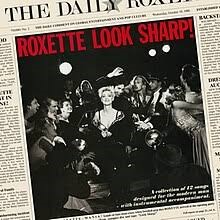
Choosing the best Roxette Album
Roxette remains one of Sweden’s most successful pop duos, blending catchy melodies with heartfelt lyrics and global appeal. Fans still debate which is the best Roxette album, as each release offers something unique. From their 1980s breakthrough to their emotional final album, Roxette built a discography full of pop hits, radio staples, and fan favorites. This blog looks at every Roxette studio album, offering insight into their evolution, career highlights, and lasting impact.
Before diving in, let’s look at the most asked questions about Roxette—questions that still come up years after their peak success.
Most Asked questions
What happened to Marie Fredriksson from Roxette?
Marie Fredriksson faced a serious health challenge in 2002 when doctors diagnosed her with a brain tumor. After surgery and intensive treatment, she made a remarkable recovery and returned to performing. Her determination inspired fans around the world. Sadly, Marie passed away in 2019, bringing an end to the original Roxette duo. Her voice remains central to Roxette’s identity and legacy.
Is Roxette still making music?
After Marie’s passing, Roxette no longer records as a duo. However, Per Gessle continues creating music under the name PG Roxette. His recent work keeps the Roxette sound alive while honoring their legacy. Although the original Roxette era has closed, new generations still discover their timeless music
What are Roxette's biggest hits?
Roxette achieved international success with a long list of hits. Songs like “The Look,” “Listen to Your Heart,” and “It Must Have Been Love” became chart-toppers around the world. “Joyride” and “Spending My Time” also gained wide acclaim. These tracks continue to define their impact on pop music.
Where is Roxette from?
Roxette comes from Halmstad, a coastal city in southwest Sweden. The town played a key role in their early collaborations and musical development. Both Marie and Per had individual careers in Sweden before forming Roxette
When did Roxette form?
Roxette officially formed in 1986, though Per and Marie had worked together earlier. Their debut album, Pearls of Passion, launched their partnership and set the stage for later success.
Who were the members of Roxette?
The duo consisted of Marie Fredriksson (lead vocals and keyboards) and Per Gessle (vocals, guitar, and songwriting). Their chemistry and contrast made Roxette unique. Marie’s emotional delivery and Per’s songwriting balanced each other perfectly.
How many albums did Roxette release?
Roxette released ten studio albums from 1986 to 2016. Each release marked a new phase in their creative journey. In this blog, we explore every one of those records to help identify the best Roxette album
What genre of music is Roxette?
Roxette’s music blends pop, pop rock, power pop, and soft rock. Their sound evolved over time, but they always stayed melodic. From ballads to upbeat anthems, their style was broad yet unmistakably Roxette.
Did Roxette tour after Marie’s illness?
Yes, after her recovery, Marie returned to the stage. Roxette resumed touring in the late 2000s and early 2010s. Although her health required some adjustments, she continued to perform globally, thrilling long-time fans.
What is "It Must Have Been Love" famous for?
The song gained massive international attention after featuring in the 1990 film Pretty Woman. That placement turned it into one of Roxette’s biggest global hits. Its emotional impact and wide exposure helped cement Roxette’s place in pop history.
The Albums
Pearls of Passion (1986)
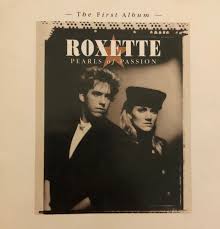
Pearls of Passion (1986) introduced Roxette to Sweden and hinted at their global potential. Released during a decade dominated by synth-pop and power ballads, the album fit the era but lacked major international impact. Still, it laid the groundwork for what many fans would later consider contenders for the best Roxette album. This debut showed early signs of Per Gessle’s melodic instincts and Marie Fredriksson’s vocal strength.
The album arrived just as Swedish pop acts were gaining global recognition. Yet Pearls of Passion remained a domestic release until years later. Despite that, the songs struck a chord in their home country. Because the production leaned toward romantic ballads and mid-tempo pop, it didn’t immediately catch fire overseas. However, tracks like “Neverending Love” gained traction and hinted at what Roxette could achieve.
Critics received it modestly at first, though longtime fans often revisit it for its sincerity and emotional depth. While it lacks the polish of later releases, Pearls of Passion captures Roxette in their raw, formative phase. Many listeners now view it as a valuable chapter in understanding their evolution. Even though it may not be the best Roxette album for casual listeners, dedicated fans appreciate it as an essential beginning. Its influence echoes in the albums that followed.
Look Sharp! (1988)

Look Sharp! (1988) marked Roxette’s true breakthrough. After moderate local success with their debut, this album catapulted them to global fame. Released in a pop landscape dominated by acts like Madonna and Michael Jackson, Look Sharp! held its own. It delivered hooks, energy, and emotional resonance. For many, this remains the best Roxette album due to its massive impact and enduring appeal.
The album’s success began with “The Look,” which unexpectedly hit number one in the U.S. thanks to grassroots radio play. That momentum continued with “Listen to Your Heart” and “Dangerous,” both securing chart positions worldwide. These singles made Roxette household names and turned the album into an international bestseller.
Marie Fredriksson’s vocals soared, blending power with vulnerability. Meanwhile, Per Gessle’s songwriting proved sharp and catchy. Together, they created a perfect pop formula that few could rival at the time. The sound was polished but not overproduced, making it radio-friendly yet distinct.
Critically, Look Sharp! earned praise for its strong melodies and consistent quality. It didn’t just perform well commercially—it shaped Roxette’s identity. Listeners worldwide embraced their mix of romantic ballads and upbeat rock-influenced pop. This balance is why many fans and critics still point to this release when debating the best Roxette album.
The success of Look Sharp! wasn’t just about hits—it was about timing, execution, and authenticity. Roxette connected with a wide audience and proved that Swedish pop could dominate global charts. Their momentum from this album launched a string of successful releases that followed. Without Look Sharp!, the Roxette story would be incomplete.
Joyride (1991)
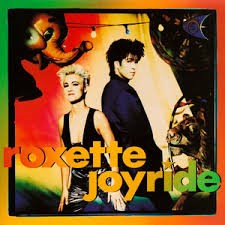
Joyride (1991) took Roxette’s global success even further. Building on the momentum of Look Sharp!, this album delivered confidence, polish, and wide appeal. It arrived during a time when pop music was evolving, yet Roxette maintained their core sound. Many fans still consider Joyride the best Roxette album because of its consistency, production value, and hit singles.
The title track, “Joyride,” became a worldwide anthem and confirmed Roxette’s pop dominance. Meanwhile, ballads like “Fading Like a Flower” and “Spending My Time” showcased Marie Fredriksson’s emotive range. These songs connected with fans across generations. Even today, their melodies remain recognizable to listeners of all ages.
Roxette blended upbeat pop with emotional depth throughout the album. Because of this, they reached both casual fans and loyal followers. The sound was accessible but never simplistic. Each track offered a mix of energy, sentiment, and expert arrangement.
The early ’90s pop landscape had shifted, yet Joyride held firm. While other acts leaned into grunge or R&B, Roxette stayed true to their style. That decision paid off. The album sold millions and solidified their reputation. Critics praised its production and catchy songwriting. Fans embraced its emotional sincerity and optimistic tone.
For many, Joyride represents Roxette at their commercial and creative peak. It blends the confidence of experience with the freshness of evolving ideas. When fans discuss the best Roxette album, Joyride often comes out on top. Its longevity and continued relevance prove its staying power. Whether you were there in 1991 or discovered it later, this album remains a classic chapter in Roxette’s discography.
Tourism (1992)
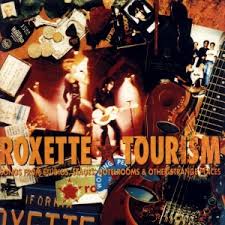
Tourism (1992) was not a typical studio album. Roxette described it as “songs from studios, stages, hotel rooms and other strange places.” This unconventional mix created something bold and unexpected. While not always the first pick for the best Roxette album, Tourism captured the band in motion, both literally and creatively.
Released after the massive success of Joyride, this album featured new songs, reworked tracks, and live recordings. That structure set it apart. Yet despite its patchwork nature, Tourism performed well commercially. It included hits like “How Do You Do!” and “Queen of Rain,” both of which kept Roxette in radio rotation across Europe and beyond.
The album's charm lies in its unpredictability. Some songs were recorded backstage or during soundchecks, offering a rawer side of Roxette. This looser structure allowed them to experiment without losing their pop identity. It was a travelogue of their global tour experience, turned into a listening journey.
Critics gave mixed reviews, often unsure how to classify the album. However, fans appreciated the behind-the-scenes vibe and diversity. It gave listeners a glimpse into the band’s life on the road. While not polished like Look Sharp! or Joyride, Tourism still held Roxette’s signature sound.
When exploring the best Roxette album, Tourism deserves consideration for its creativity and context. It bridged the gap between massive studio releases while keeping momentum high. Its blend of live energy and studio quality made it memorable, if not conventional. For those seeking more than just hits, Tourism offers a deeper dive into Roxette’s musical world during their peak years.
Crash! Boom! Bang! (1994)
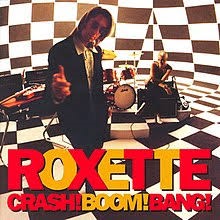
Crash! Boom! Bang! (1994) marked a mature chapter in Roxette’s career. By this time, they had already dominated charts worldwide. With this album, they refined their songwriting and delivered a more layered, introspective sound. Some fans consider it the best Roxette album for its emotional range and musical growth.
While earlier albums leaned heavily on pop hooks, Crash! Boom! Bang! explored darker tones and slower tempos. However, it still produced major hits like “Sleeping in My Car,” “Fireworks,” and the dramatic title track. Each song added depth to Roxette’s catalog, balancing energy with vulnerability.
The album landed during a transitional time for pop music. Grunge and alt-rock were rising, yet Roxette remained focused. They didn’t chase trends—instead, they sharpened their strengths. Marie Fredriksson delivered some of her most powerful vocal performances, while Per Gessle provided melodic structure and lyrical depth.
Critics noted the album's shift in tone, calling it more sophisticated than previous work. Although it didn’t dominate U.S. charts like earlier albums, it performed well in Europe and Latin America. Fans appreciated the emotional honesty and musical ambition.
Importantly, Crash! Boom! Bang! demonstrated Roxette’s ability to evolve. Rather than repeat past formulas, they broadened their sound. The production was polished, yet the songs felt personal. For long-time listeners, this album hit differently—it grew with them.
When debating the best Roxette album, many highlight Crash! Boom! Bang! for its richness and replay value. It wasn’t just another pop release—it was a statement. For those seeking something deeper than radio hits, this album delivers.
Have a Nice Day (1999)

Have a Nice Day (1999) introduced a bold new era for Roxette. After a five-year break from studio albums, the duo returned with fresh ideas and a modernized sound. While not everyone's pick for the best Roxette album, it represented a major step in their creative evolution.
This album embraced electronic elements more than their previous releases. Songs like “Stars” and “Wish I Could Fly” blended classic pop sensibilities with late-’90s production trends. That shift gave the record a sleek and contemporary feel. At the same time, Marie Fredriksson’s vocals remained a powerful emotional anchor.
Roxette didn’t abandon their roots—they expanded them. “Salvation” and “Beautiful Things” offered the emotional depth fans loved. Meanwhile, Per Gessle’s songwriting continued to balance catchy hooks with reflective lyrics. The sound was updated, but the heart of Roxette stayed intact.
Critics responded with mixed views. Some praised the duo’s willingness to modernize, while others preferred their earlier, more guitar-driven sound. Yet the album performed well across Europe, especially in Germany and Sweden. Fans appreciated that Roxette took risks instead of simply recreating past hits.
The late '90s were crowded with emerging pop acts. Still, Roxette carved out space by pushing forward. They proved they could grow without losing their identity. For longtime followers, Have a Nice Day showed a band still willing to challenge themselves.
When discussing the best Roxette album, this one often sparks debate. Its modern approach divided opinions, but its ambition can’t be ignored. It stands as a bold reinvention that kept Roxette relevant into a new musical era.
Room Service (2001)
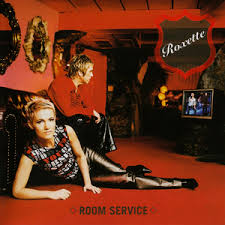
Room Service (2001) continued Roxette’s evolution into a more modern pop sound. Released two years after Have a Nice Day, the album pushed further into glossy production and digital textures. Some fans see this as the best Roxette album from their later period due to its polish and melodic focus.
Songs like “The Centre of the Heart” and “Real Sugar” highlight their ability to create catchy, radio-friendly hits without repeating old patterns. However, beneath the surface, this album carried emotional depth. Tracks such as “Milk and Toast and Honey” showed a softer, more intimate side of the duo.
At this point in their career, Roxette focused more on their European fanbase. Though the album didn’t see a full U.S. release, it found success in several European countries. It charted well in Sweden and Germany, proving their staying power despite industry shifts.
The musical landscape had changed drastically by 2001. Pop was more manufactured, and guitar-driven groups were fading from the charts. Yet Roxette held firm to their songwriting strength. Per Gessle’s hooks remained sharp, and Marie Fredriksson’s vocals brought genuine emotion to even the slickest arrangements.
Critics responded with moderate praise. Some saw Room Service as safe, while others appreciated its consistency. For fans, though, it offered familiarity and forward motion in equal measure.
Many listeners view this as an underrated entry in the Roxette discography. Although it didn’t have the chart dominance of earlier albums, it remains a favorite for those who value melody and strong vocals. When choosing the best Roxette album, Room Service deserves consideration for its balance of style and substance.
Charm School (2011)
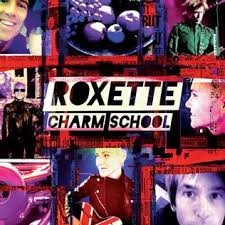
Charm School (2011) marked a powerful comeback for Roxette. After Marie Fredriksson’s brain tumor diagnosis and recovery, this album reintroduced the duo with renewed energy. Many fans consider it the best Roxette album from their later years, thanks to its strong melodies and classic pop-rock feel.
The album combined the band’s signature sound with modern production. Tracks like “She’s Got Nothing On (But The Radio)” and “Speak to Me” captured the upbeat spirit Roxette is known for. Meanwhile, ballads such as “No One Makes It on Her Own” showcased Marie’s emotional vocal strength after her health challenges.
Critics generally welcomed the album. They praised the band’s ability to stay relevant while honoring their roots. Charm School performed well in Europe, especially in Sweden, Germany, and Russia. It demonstrated that Roxette still had a loyal fanbase eager for new music.
This album also reflected a theme of resilience and hope. After years of uncertainty, Roxette returned with songs that felt both familiar and fresh. The production balanced polish with heartfelt performances, making it a standout release.
When debating the best Roxette album, Charm School stands out as a testament to their enduring talent. It bridged their classic style with a modern edge, proving the band’s lasting appeal and creative spirit.
Travelling (2012)
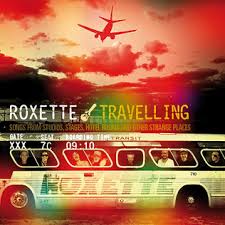
Travelling (2012) followed the success of Charm School and offered a unique blend of new material, re-recorded classics, and live tracks. This album stands out in Roxette’s discography as a dynamic reflection of their touring life. Some fans regard it as a contender for the best Roxette album because of its variety and energy.
The album captures the spirit of Roxette on the road, with songs recorded during their Charm School tour. New tracks like “It’s Possible” show the band’s continued knack for crafting catchy pop-rock tunes. At the same time, reworked versions of older hits bring a fresh feel to familiar favorites.
Critics appreciated the concept, viewing Travelling as more than just a greatest hits or live album. It offers an intimate glimpse into the duo’s evolving sound and stage presence. The album performed well in markets such as Sweden and Germany, maintaining Roxette’s strong fan connection.
By mixing studio and live elements, Roxette highlighted their ability to engage audiences across different settings. The polished production balanced with raw concert energy makes Travelling a versatile listening experience.
In conversations about the best Roxette album, Travelling offers a unique perspective. It celebrates their legacy while showcasing their present, making it a special release in their catalog.
Good Karma (2016)
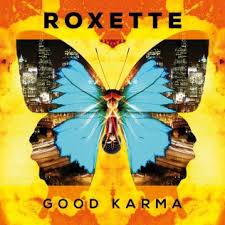
Good Karma (2016) stands as Roxette’s final studio album as a duo, presenting a bold, contemporary sound. Many fans and critics debate whether it is the best Roxette album from their later career due to its electronic and experimental approach.
The album incorporates synth-heavy production and dance beats, which marked a noticeable shift from their earlier rock and pop style. Songs like “It Just Happens” and “Some Other Summer” highlight this modern direction. Despite the change, Per Gessle’s knack for melody and Marie Fredriksson’s distinctive vocals kept the essence of Roxette alive.
Critical reactions were mixed. Some welcomed the duo’s willingness to innovate, while others missed the classic pop-rock sound. Nevertheless, Good Karma found a solid audience in Europe, especially among loyal fans who appreciated the fresh take.
The album reflects Roxette’s desire to stay relevant in a shifting music landscape. It combines experimentation with strong songwriting, even as it diverges from their traditional style.
When choosing the best Roxette album, Good Karma might not top every list, but it represents the band’s final statement and creative spirit. It proves Roxette’s lasting willingness to explore new musical territories while honoring their legacy.
Deciding which is the best Roxette album depends on your taste—whether you prefer their early energetic pop-rock or their later, more experimental sounds. Albums like Look Sharp! and Joyride showcase their peak international success, while Charm School and Good Karma reflect their resilience and evolution. Whatever your pick, Roxette’s discography offers something memorable for every fan.
Recent Posts
Queen studio albums: A Review
Phil Collins Albums Ranked & Reviewed – Complete Guide to Every Studio Album
The best of Massive Attack
Let’s Make Magic
Book Your Event DJ Now




